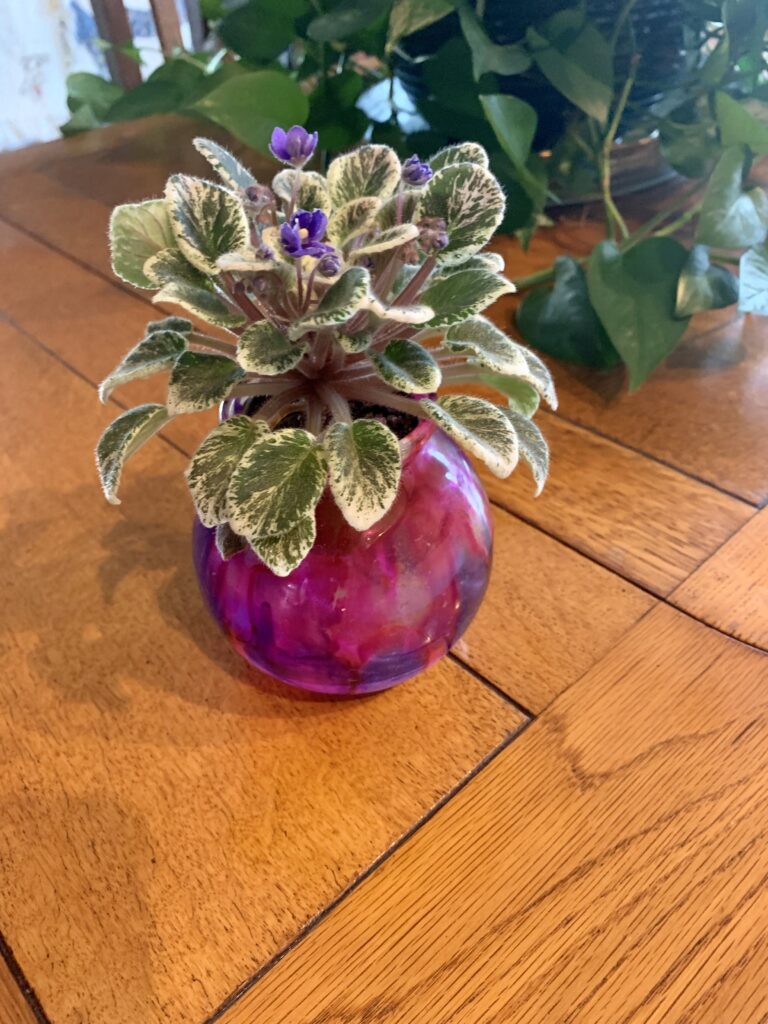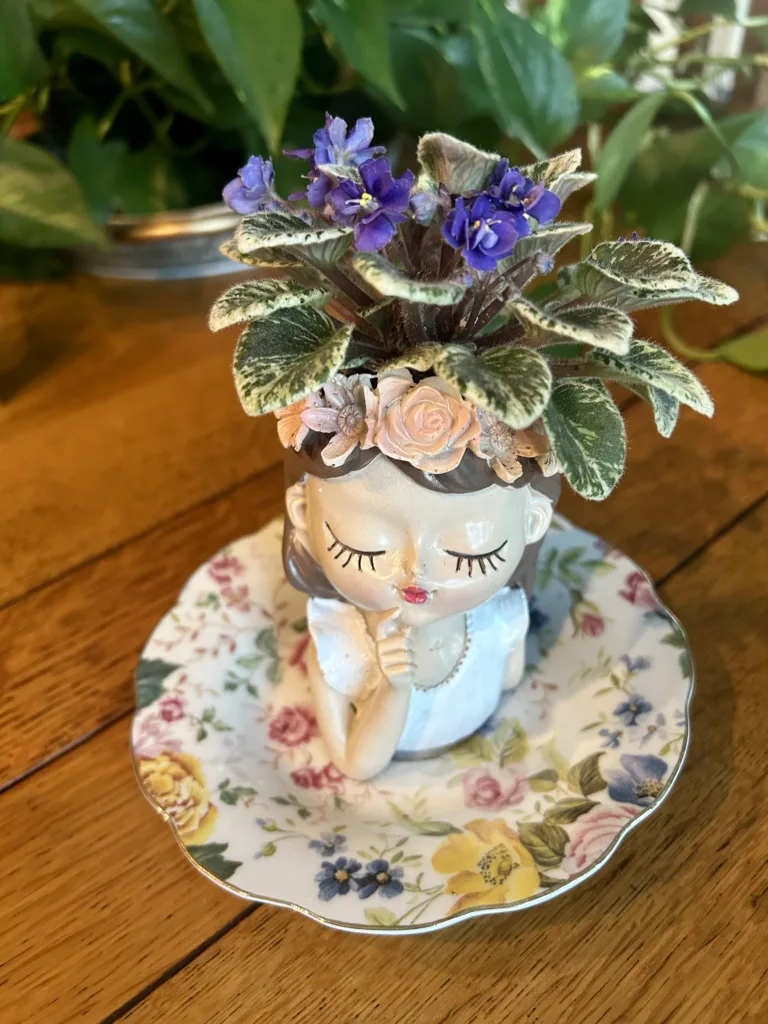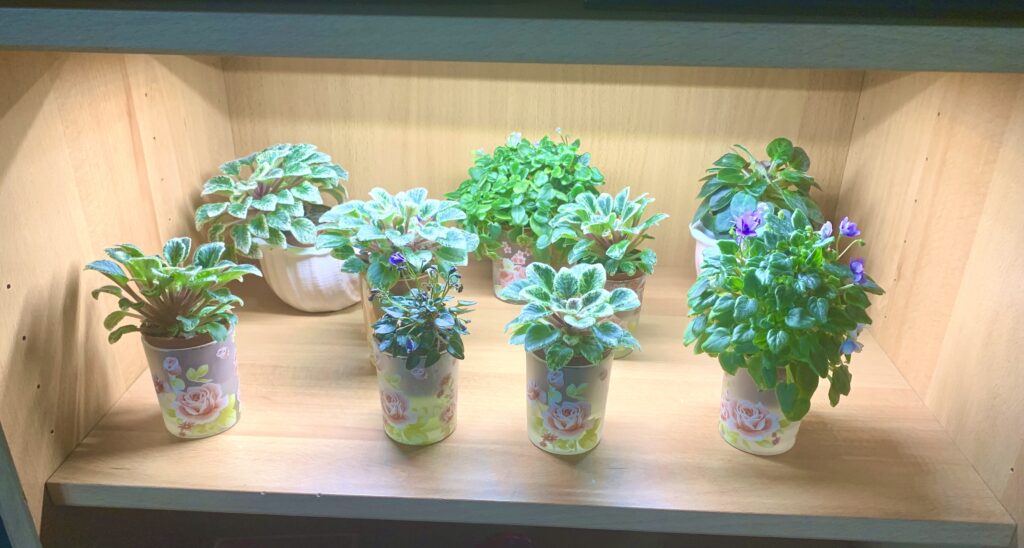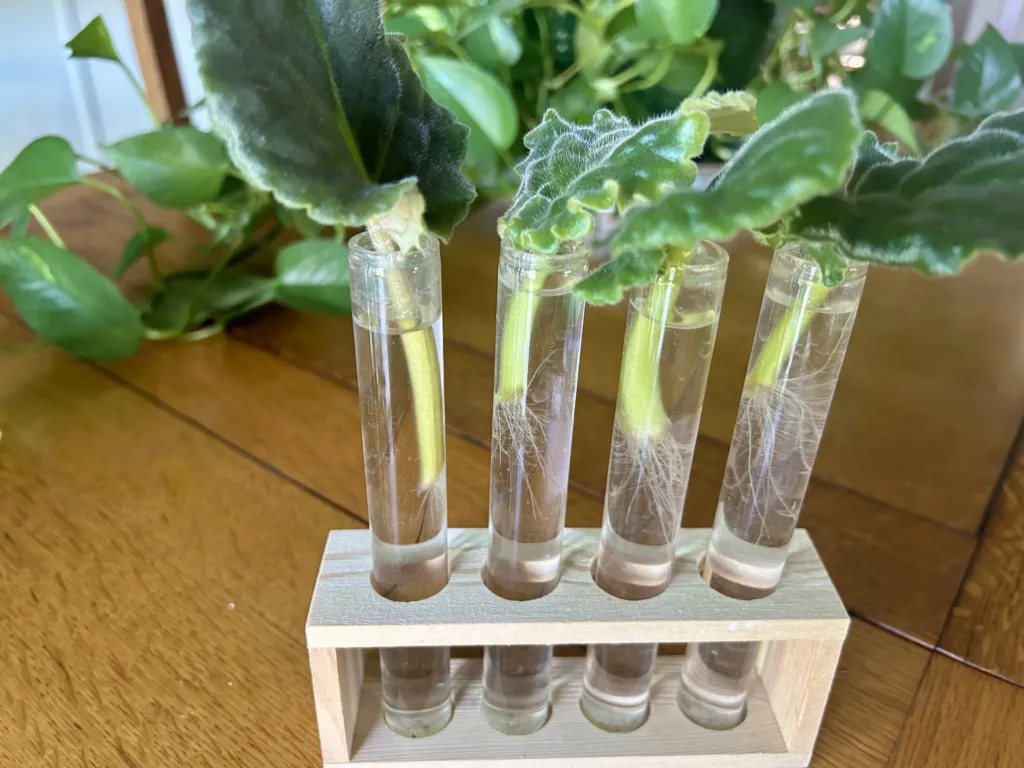Miniature African Violets are potted plants that bring a splash of vibrant beauty to any room. They can make an elegant addition to your home, and they’re surprisingly easy to care for! Whether you’re new to the world of miniature African violets or looking for refreshing gardening ideas, this blog post has got you covered with tips on pot size, soil, light, water requirements, and propagation methods. AV gardeners who want the best results should learn how these delicate plants thrive to ensure their long-term health and create lush blooms all year long. Discover all there is to know about Miniature African Violets so you can become its proudest proprietor!
Mini African Violets

Miniature African Violets are a popular houseplant due to their eye-catching colors and easy upkeep. Officially known as Saintpaulia Goetzeana, Miniature African Violets are small in size. With fuzzy, velvety leaves that come in an assortment of shapes, sizes, and colors. To identify African Violets be sure to look for the fuzzy heart-shaped leaves and the vivid violet flowers atop long stems. There are several types of African Violets available ranging from standard single colors to the rarer tri-colored petals or rosette leaf styles. Proper care of Mini African Violets begins with selecting the right pot size and soil mixture. And exposing them to medium indirect sunlight, watering when dry with lukewarm water, and providing adequate humidity. With just these few basic steps any novice gardener can quickly become experienced at caring for miniature African violets!
African Violet Pots

One of the most important aspects of caring for a Miniature African Violet is selecting the right pot type and size. When choosing a pot size, you should aim for one that is just wide enough to hold the plant’s root system to provide optimal growth. For miniatures, this is anywhere from 2″ up to 3″. I use these 2″ pots for all but 2 of my 20 Mini African Violets. Although I do have one in a 3″ plastic pot to see if works better with one that keeps getting larger and so far so good. I have also experimented putting one of my mini’s in a small fairy head planter and I love how it looks. This one is on a saucer and watered very carefully from the top, making sure not to get the leaves wet.
Wick Watering African Violets
I use a water-wicking system for all my Mini African Violets. These 2″ plastic pots work perfectly, I put a 2″ piece of screen over the bottom to keep soil from leaking out into the water. I use yarn pieces as my wick split into 2 strands so as not to draw up too much water. The wick goes from the top of the soil line down into the water. For a water reservoir, I use decorative shot glasses or miniature bowl vases. The water is topped off weekly with AV fertilizer added to my water. I use filtered water, and to one gallon I add 1 Tablespoon of hydrogen peroxide (to deter algae growth) and 2-3 droppers of Schultz AV fertilizer. Every other week I clean out my water receptacle and replace it with fresh.
Best Soil for African Violets
In terms of soil, you can purchase a mix specifically labeled for African Violets like Black Gold AV soil or Miracle Grow AV soil. I have used both and they work great. These mixtures typically contain sphagnum peat moss, vermiculite, and perlite. I prefer to mix my own since I own over 50 African Violets and just find it more cost-effective. I use 2 parts sphagnum peat moss, 1 part vermiculite, and 1 part perlite. By following these guidelines, you can ensure that your Miniature African Violets will thrive in their new home and live long lives full of vibrant color!
Lighting for African Violets
Miniature African Violets (MAV) need approximately 12 hours of bright, yet indirect sunlight each day to thrive. The best way to provide this is by placing MAVs near a sunny window that filters out direct light through curtains or blinds, as direct exposure can scorch their delicate leaves. I have mine in North, South, and West windows in my home, the West window gets the most direct sun so I just partially close my blinds to filter the light and this works great. If you don’t have blinds, sheer curtains will also work.
African Violet Grow Lights
For those without access to natural light, grow lights are an effective and affordable solution for providing your MAVs with the light they need. The best type of grow lights to use are fluorescent or LED bulbs that produce full spectrum light which mimics natural sunlight. I have this FoxGarden full spectrum light on my shelf of miniatures for over a year and they love it! Be sure to place your MAV at least 8-10 inches below the bulb and turn it off at night.

As long as MAVs receive the required balance of light and darkness with adequate soil drainage and humidity, they will continue to be among the most rewarding indoor houseplants one can cultivate!
Watering African Violets
Watering Miniature African Violets is an important part of their care and maintenance. These types of plants require frequent watering, with the soil maintained at a level of moistness at all times. The best way to gauge when your mini violets need water is to check how dry the soil feels below the surface. Too much water can cause root rot so be sure not to over-water and instead watch for signs of distress such as wilting, yellow leaves, or drooping stems before you add more moisture.
As described above under pot types I water wick all my African Violets except for a few that don’t do well in water wicking. Remember every AV is different and will let you know what way is working for them by drooping, yellow or brown leaves.
Fertilizing African Violets
As a miniature African violet enthusiast, you want to promote healthy growth and blooms for your beautiful plants. One way to do this is by proper fertilization. It is recommended to feed the plant with a balanced fertilizer weekly, I use 2 droppers of Schultz AV Fertilizer in one gallon of water one week and the next week I use 3 droppers. I have continuous blooms on all of my African Violets year-round with this system of fertilization. With regular monitoring of your miniature African violet’s conditions, including nutrient intake from fertilization, you can ensure optimal growth and flowering throughout the year.
Propagating African Violets
Miniature African Violets are a great addition to any home, and propagating them from existing plants is an incredibly rewarding experience. With the right materials and basic knowledge, anyone can get started growing their miniature African violets. Propagation can be done either through cuttings or division.
When propagating with cuttings, take at least three-inch (7.6 cm) long stem cuttings from nonflowering stems and place them in vermiculite, perlite, or specialized African Violet Soil Mix. Place the cutting in a humid environment out of direct sunlight until it develops root buds before transferring it to its own pot with fresh african violet soil mix. Occasionally your plant will have sucker plants or babies. Remove the sucker plant by using a sterile knife or scissors (I wipe mine down with alcohol and let them air dry) to separate established plants at a leaf juncture; transfer each newly separated plant into moistened soil mix within its pot.
Propagating African Violets in Water

Propagation by water is also an option and my preferred method of propagation. To propagate in water, simply take a stem cutting with at least one leaf and place it in water in a propagation station. Place the station out of direct sunlight and change the water every few days to keep it fresh. In about three weeks you should see roots starting to form; once these are visible, transplant your new miniature African violet into a pot with fresh soil mix. With the proper care, your miniature African violets should be healthy and happy for many years to come!
African Violet Seeds
One other way to propagate Miniature African Violets is from seed. You can purchase seeds online or from a reputable nursery, and then sow them in AV soil. Cover the seed lightly with 1/4 inch of soil and mist it with water. Place the pot in bright indirect light, maintain consistent moisture levels, and cover the pot with a plastic bag or dome lid to maintain high humidity. In about 10-14 days, you should start to see sprouts! Once the seedlings reach 2-3 inches in height and have several leaves, transplant them into individual pots of fresh soil mix.
African Violet Terrariums
Terrariums are a great way to create your own miniature African violet landscape. They’re easy to care for and fun to assemble! Start by selecting an appropriate-sized container, then add some potting soil. Next, add rocks or gravel on top of the soil, followed by a layer of sphagnum moss. Place your miniature African violets in the soil and arrange them to your liking. Make sure that each plant has some room to grow, as well as adequate light and humidity. Decorate your terrarium with small rocks and pebbles for a unique look. With regular care, your terrarium should be a show-stopping display of miniature African violets for years to come!
Now that you know the basics of how to properly care for and propagate your miniature African Violets, you can start creating your unique displays and enjoy these beautiful plants all year round.
Problems with African Violets
African Violets can be a bit finicky at times but once you find out where they are happy they reward you with year round blooms and beautiful foliage!
Cupping of Leaves – This can be caused by your African Violet being too cold, happens allot when placed in North windows. Especially at night when the temperature drops and the wind blows. Most Violets don’t like temperatures cooler than 65 F. Different cultivars react differently so while one looks fine and the other starts cupping of leaves or has a tight center growth then just move it to a different window. You might want to invest in a temperature monitor like this ThermoPro and it will let you know how warm and cool the plants are in a 24 hour period.
African Violet Leaves Drooping – This happens when the soil is too wet or if it’s not watered enough. Just make sure your soil is moist, not dry to the touch or soggy and saturated with water.
Spotting on Leaves – This can be caused by water damage to the leaf. You should never mist your African Violets. Also try to never get water on the foliage as this will cause permanent leaf spotting.
Happy Gardening!
In conclusion, Miniature African Violets have become a popular houseplant. With understanding the basics of these plants, identifying different types available, pot size and soil, light requirements, and watering schedules, as well as fertilizing and propagation methods; you are now equipped with all the tips you need to care for your miniature African violets. Taking the proper steps in caring for them will ensure a healthy, vibrant addition to your home or office décor. So why not give these amazing little plants a try?
Please be sure to check out my Gardening Blog Post Page for more tips on all types of gardening. Including Seed Starting, Orchids, Water Gardening, Coldframe Gardening, Indoor Bulb Gardening, Hydroponics, Container Gardening, Mums, Herbs, African Violets, planting Bulbs, Flower Gardening, Vegetable and Fruit Gardening, Indoor Houseplants of all kinds, Cactus, Succulents, Hanging plants, Deer resistant plants and even Bird, Bee, Butterfly and Hummingbird Gardens!
